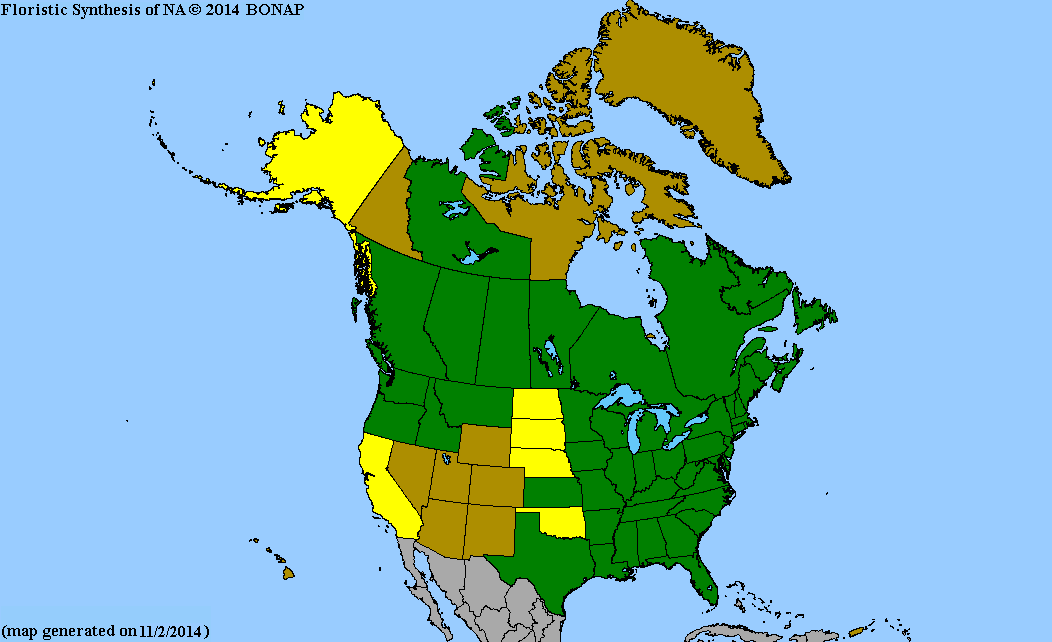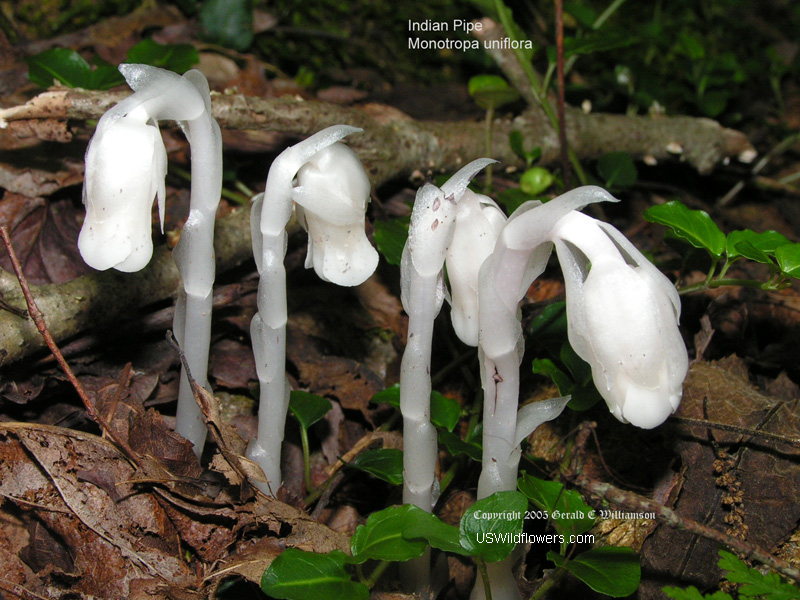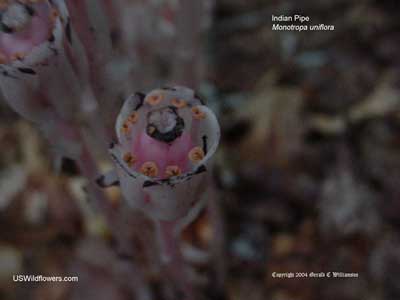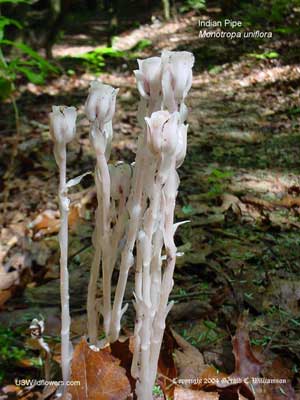Wildflowers of the United States | |||||||||||||
| |||||||||||||
Monotropa uniflora - Indian Pipe, Ghost Flower, Ghost Plant. When first seen, Indian Pipe seems more like a mushroom or other fungus than like a true flowering plant due to the color - or lack of color. However, it has a stem, bract-like scales in place of leaves, and a single flower at the end of the stem. The single flower gives it the species epithet - uniflora - which is a key difference between this species and Monotropa hypopitys, the only other species in the Montropa genus. Monotropa hypopitys (Pinesap) has multiple flowers in a cluster on each stem. The Monotropa genus has recently been moved into Ericaceae - the Heath family. | Indian Pipe has roots through which it gathers its nourishment. The plant lacks chlorophyll but instead gleans its fix carbon from a mycorrhizal fungus in the soil where it grows. The fungus derives its own carbon from the roots of a host tree. Thus, while I would argue that it is a mutually beneficial relationship because nothing in a forest environment is ultimately wasted, Monotropa uniflora is considered to be an epiparasite - a parasite feeding on another parasite. (This paragraph was updated 2019-10-20 based on an email from a reader pointing out that Monotropa uniflora is a parasitic plant, one getting nourishment from fungi while providing no direct benefit to the host organism.) Update 2017-08-15: My assertion that pollinated Monotropa uniflora plants turn pink and straighten to upright was challenged recently. Since the description on this page was written long ago (8 or 9 years), I do not have records of the references from which I drew that conclusion. I apologize for purveying this apparent misinformation. With current research, it's clear that this species can be pink without having been pollinated. Found in: AK, AL, AR, CA, CT, DC, DE, FL, GA, IA, ID, IL, IN, KS, KY, LA, MA, MD, ME, MI, MN, MO, MS, MT, NC, ND, NE, NH, NJ, NY, OH, OK, OR, PA, RI, SC, TN, TX, VA, VT, WA, WI, WV Leave comments on Monotropa uniflora at this link.   Map courtesy of The Biota of North America Program. Map color key Search Our Database: Enter any portion of the Scientific, Common Name, or both. Do a general Google search of the entire site: #ad
| #ad
| | ||||||||||
|
Commercial / Cookie Notice Looking for Wildflowers for a specific state? Check here: | |||||||||||||
|
All content except USDA Plants Database map Copyright Gerald C. Williamson 2025 | |||||||||||||
Code Update 20230302



